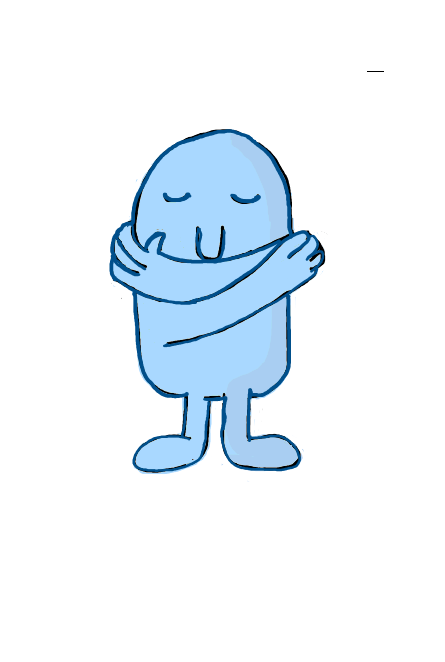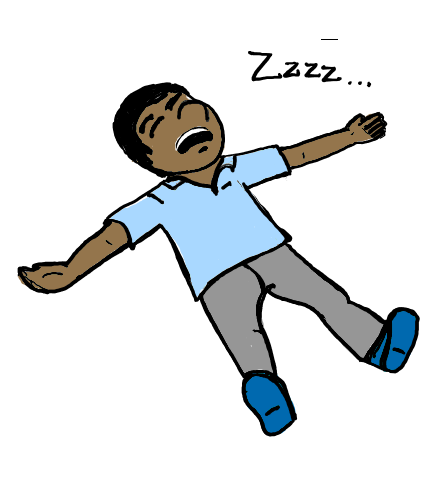Calming Techniques
Everyone knows that breathing is an essential part of life, but did you know that breathing plays an essential role in anxiety?
Breathing is a powerful determinant of physical state. When our breathing rate increases, a number of changes begin to occur in our bodies.
Perhaps you’ve noticed when you‘ve had a fright; you might suddenly gasp, feel a little breathless and a little light-headed, as well as feeling some tingling sensations around your body.
Believe it or not, the way we breathe is a major factor in producing these and other sensations that are noticeable when we are anxious.

Anxious overbreathing
You might already know that we breathe in oxygen – which is used by the body – and we breathe out carbon dioxide. In order for the body to run efficiently, there needs to be a balance between oxygen and carbon dioxide, and this balance is maintained through how fast and how deeply we breathe.
When we are anxious though, this balance is disrupted. Essentially, we take in more oxygen than the body needs – in other words we over-breathe, or hyperventilate. When this imbalance is detected, the body responds with a number of chemical changes that produce symptoms such as dizziness, light-headedness, confusion, breathlessness, blurred vision, increase in heart rate to pump more blood around, numbness and tingling in the extremities, cold clammy hands and muscle stiffness. The normal rate of breathing is 10-12 breaths per minute – what’s your breathing rate?
The Calming Technique
While over breathing and hyperventilation are not specifically dangerous (it’s even used in medical testing!), continued over breathing can leave you feeling exhausted or ‘on edge’ so that you’re more likely to respond to stressful situations with intense anxiety and panic.
Gaining control over your breathing involves both slowing your rate of breathing and changing your breathing style. Use the calming technique by following these steps and you’ll be on your way to developing a better breathing habit.
- Ensure that you are sitting on a comfortable chair or laying on a bed
- Take a breath in for 4 seconds (through the nose if possible
- Hold the breath for 2 seconds
- Release the breath taking 6 seconds (through the nose if possible), then pause slightly before breathing in again.
- Practice, practice, practice!
Breathing Tips
- When you first begin changing your breathing, it may be difficult to slow your breathing down to this rate. You may wish to try using a 3-in, 1hold, 4-out breathing rate to start off with.
- When you are doing your exercises, make sure that you are breathing from your stomach rather than your chest. You can check this by placing a hand on each area for comparison (your stomach should rise when you breathe in.)
- Try to practise at least once or twice a day at a time when you can relax, relatively free from distraction. This will help to develop a more relaxed breathing habit.
By using the calming technique, you can slow your breathing down and reduce your general level anxiety. With enough practice, it can even help to reduce your anxiety when you are in an anxious situation.
Progressive Muscle RELAXATION
One of the body’s reactions to anxiety is muscle tension. This can result in feeling stressed, can lead to aches and pains, as well as feeling exhausted. Think about how you respond. Do you get ‘uptight’ when you’re worried? Muscle relaxation can be particularly helpful.
Muscle tension
Sometimes we don’t even notice how our muscles become tense, but perhaps you clench your teeth slightly so that your jaw feels tight, or maybe your shoulders. Muscle tension can also be associated with backaches and tension headaches and migraines.
Progressive Muscle Relaxation
One method of reducing such tension is through a technique called Progressive Muscle relaxation (PMR). In these exercises, you tense up particular parts of the body and then relax them, and then you practise this technique consistently.
Preparing for relaxation.
When you are beginning to practice progressive muscle relaxation exercises keep in mind the following points:
Select your surroundings.
Minimise distractions and use soft lighting
Make yourself warm and comfortable.
Avoid practicing after heavy meals.
General Procedure
Slow breathing and tense each muscle group as described for approximately 5 seconds then relax for 10 seconds.
- Right hand and forearm – make a fist
- Right upper arm – bring your forearm up towards your shoulder and ‘make a muscle’
- Left hand and forearm – make a fist
- Left upper arm – bring your forearm up towards your shoulder and ‘make a muscle’
- Forehead – Raise your eyebrows as high as they will go
- Eyes and cheeks – squeeze your eyes tight shut
- Mouth and jaw – open your mouth as wide as you can, as though you are yawning.
- Neck – face forward and slowly pull your head back until you are looking at the ceiling.
- Shoulders – tense your muscles as you bring them towards your ears
- Shoulder blades and back – push your shoulder blades back, trying to touch them together, so that your chest is pushed forward.
- Chest and stomach – breathe in deeply, filling your lungs and chest with air
- Hip and buttocks – squeeze your bottom
- Right upper leg – tighten your thigh
- Right lower leg – slowly pull your toes towards you to stretch the calf muscle ( and avoid cramp)
- Right foot – clench your toes
- Left upper leg – tighten your thigh
- Left lower leg – slowly pull your toes towards you to stretch the calf muscle ( and avoid cramp)
- Left foot – clench your toes
